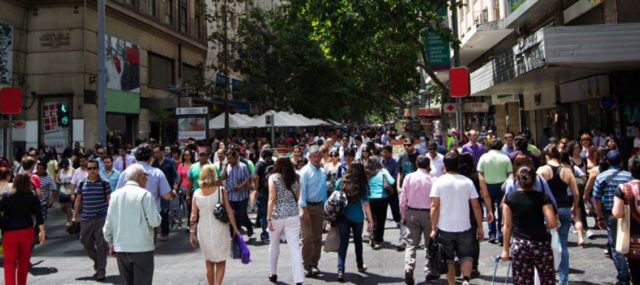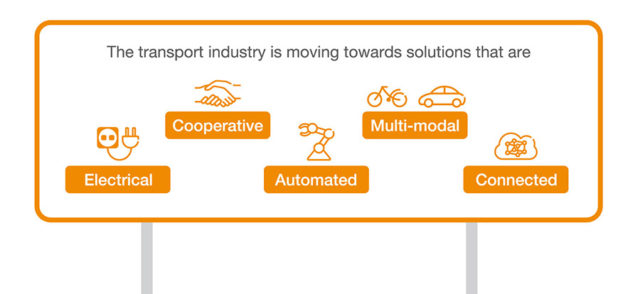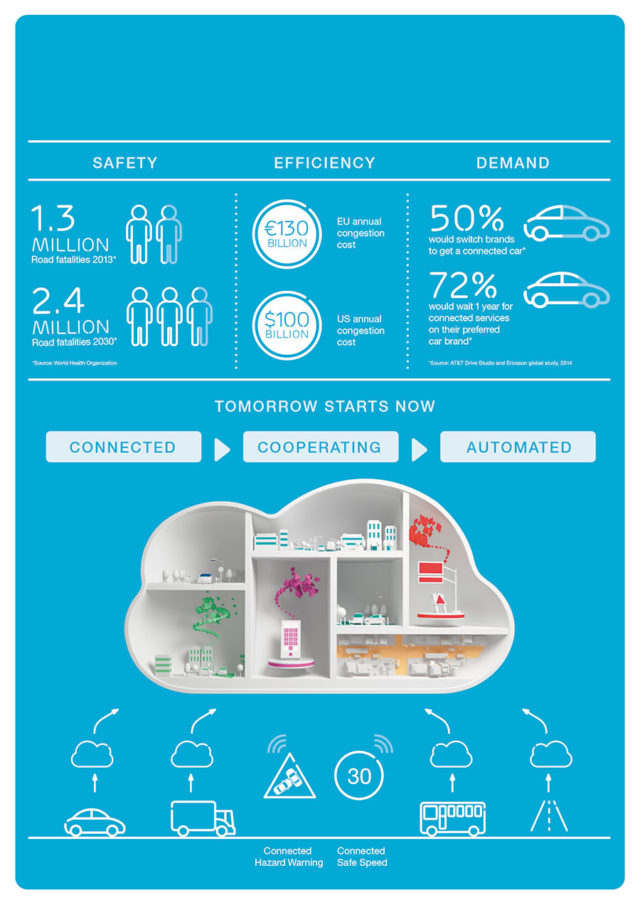
Transforming Transport by Building Ecosystems, Not Ego-systems
October 13, 2015 — Blog
Do you remember when phones were only for making calls? Soon we will be asking the same question about connected cars: Do you remember when cars were just for driving?
Today the same connectivity that transformed mobile devices is being embedded throughout transport infrastructure – in vehicles, streetlights, road sensors, management systems, tollbooths and more. City governments are fast becoming software developers and data analysts, while car manufacturers are morphing into multilevel transport service providers.

By gathering, analyzing and sharing data in real-time throughout the traffic ecosystem, we can completely reshape the transport experience for people and its impact on communities. Congestion can be reduced by rerouting traffic, accident rates lowered by car-to-car communications, and emergency response times shortened by integrating public safety agencies into the traffic system.
Sharing transport infrastructure and its related data can also open up a user’s transport options. “Mobility as a Service” will facilitate multi-modal transport, combining the management and payment systems for various modes of private and public transport into one system with one interface. People will be able to combine public transport and car sharing, for instance, or their private car and a rented bicycle – thereby choosing the best option for them at each moment.
Another example? Imagine small electric autonomous vehicles picking up pre-booked passengers at the train station, and being routed smartly through being connected to the city traffic management. Imagine shared vehicles that are always moving and never parked. A part of the door-to-door mobility services based on several modes of transport, a possibility already available today.

However, much of the information currently collected from sensors, vehicles, social media and other sources is locked away in unconnected data silos, or “ego-systems.” If we want to develop services like the examples above, all players in the transport ecosystem need to be able to interact in a safe and globally deployable way.
In other words, it is about creating ecosystems, not ego-systems.
This is a mammoth task, soon the connected global transport system will rival mobile networks in scale and security concerns. Various Internet companies are offering commuter services based on crowd-sourced data, while some automotive manufacturers are only just starting to capture internal data from their own vehicles. Yet traffic and transport authorities remain frustrated by a lack of access to raw data from the private sector that could help them improve public services.
Beyond the major players, Gartner estimates that by 2017 around 50 percent of the niche solutions around vehicle-centric data sharing will be developed by small pop-up companies. We are also seeing a new wave of location services that largely bypass mobile networks by using location data from GPS receivers in handsets or third party-location databases.
Within such a complex infrastructure, we need to ask serious questions concerning trust, ownership, data privacy and public good. Who owns the data from a connected car or bus stop or streetlight? How will these new services be regulated?
We need to develop cross-sector platforms that can simplify data sharing between traditionally separate sectors without losing quality or timeliness. Ericsson’s approach to connecting the transportation industry is focused on providing solutions in three stages: connected, cooperating and automated, within this scope, we believe connected transport must meet three criteria:
- multimodal – using different modes of transport in a smart way
- shared – both vehicles and transport infrastructure must be shared in a smart way
- managed – achieved through services such as smart booking, smart traffic management and smart payments.
Our Connected Traffic Cloud is a good example a managed cloud solution that enables the sharing of data between connected vehicles, roadside sensors, drivers and road traffic authorities. We are also active in projects such as CONVERGE, focused on cooperative intelligent transport systems, and CoCarX, as well as working with Scania and the Royal Institute of Technology in Stockholm to develop a transport lab for future infrastructure.
As vehicles increasingly become connected rolling software platforms, the long-term success of building a connected transport ecosystem ultimately depends on the engagement of all its potential members – from governments and transport authorities to new and established transport operators. These efforts will demand new open interfaces and new collaborations, and the process of transformation will not be easy. Yet, if the data silos come down and a new trustworthy digital marketplace rises, there is a great opportunity to unlock vast financial, environmental and societal value for all.

Ericsson is a partner of Cities on the Move, our event on the future of urban mobility.